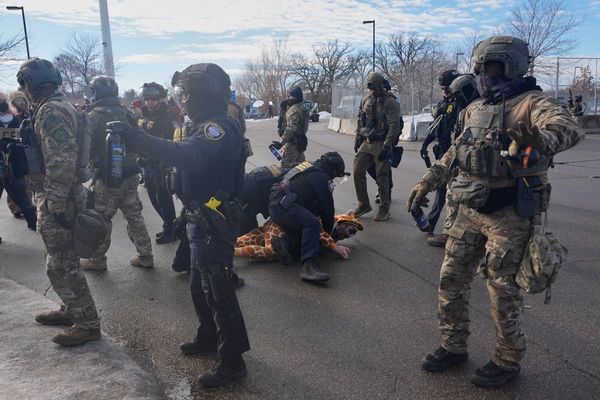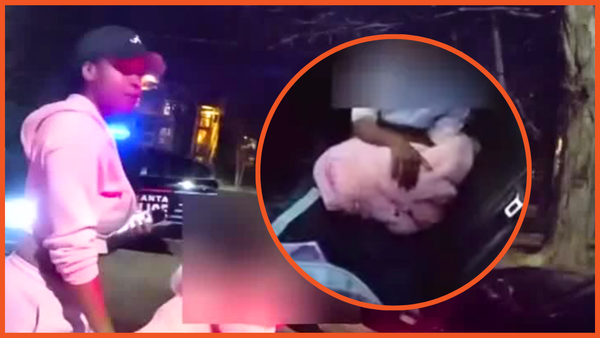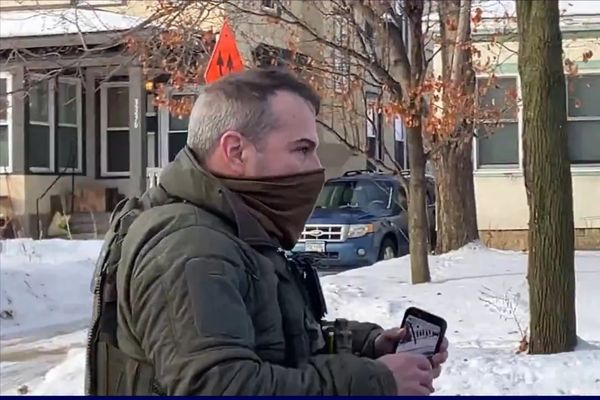
Aguer Akech didn’t know he had been stabbed.
He was running with his friends away from a fight in the car park of a suburban Melbourne train station when, gradually, he found it harder to breathe. Soon, he could no longer run, then no longer walk.
Aguer turned to a friend, his hand on his chest, and said: “Dude, I think I got stabbed.” And then he dropped to the ground.
He was dead, three days before Christmas in 2019, aged just 17.
The day after Aguer’s death, the head of Victoria police’s homicide squad, Det Ins Tim Day, spoke to the media outside Keilor Plains station, where the fight between two groups of South Sudanese-Australian youths had occurred.
“Ultimately, I’ve got very little doubt, in the fullness of time, we will identify the person who’s inflicted the fatal wounds,” he said.
Five months later, police charged a 15-year-old boy with murder. Even lawyers for the boy, James*, thought the case against him, though circumstantial, was strong. He spent the next year in custody.
But then the case collapsed. During a pre-trial hearing, a supreme court judge told the prosecution that she was “incredulous” about elements of their case and had not seen anything like it. A Guardian Australia investigation has found that police used flawed identification evidence in their case against James and that failures to hand over key information to James’s lawyers led to him spending more time in custody.
The investigation relies on hundreds of pages of transcripts from pre-trial court hearings – including hearings where James’s lawyers were able to test the evidence of prosecution witnesses – as well as documents tendered to the court and interviews with people familiar with the case.
The fallout from the case has left two families broken: the alleged murder of a 17-year-old boy may never be solved, and a 15-year-old boy wrongly spent a year in custody that he will never get back.
These families and their supporters are also grappling with a question: would this have happened if the two boys were white?
A boy with a ‘soft heart’
Aguer Akech wanted to be a police officer, his father, Lual, says from his home in Melbourne. He did work experience in a police station while at school.
He was the oldest of five children and, although he was born in a Kenyan refugee camp, Lual says his son did not want for anything during his childhood. He does not think this upbringing contributed to what came later: a teenage boy caught up in trying to please his peers and falling on the wrong side of the law.
His son had always been eager to fit in, and curious. Lual remembers that his son would never fall asleep on long drives, or even on flights all the way back to South Sudan, spanning more than 20 hours. Instead, he would ask questions, watch, engage as if he was much older than his years.
“He’s very easy going,” Lual says.
“And that will put him in trouble because … he have a soft heart, he think that people think like him, but they [don’t].”
About eight hours before he was killed, Aguer was at a soccer tournament in Keilor Downs. The tournament involved South Sudanese-Australian teams and Aguer knew some of the players and spectators.
It was a seemingly chance encounter at this suburban soccer pitch that spiralled through the late afternoon and into the evening, before coming to a head at the station early the next morning.
CCTV footage released by police after the killing gives a sense of what happened: a swarm of about 30 young men, armed with various makeshift weapons, including planks of wood grabbed from a nearby building site, brawled in the station car park.
At some point during that fight, Aguer was stabbed. Police suspected, within days, that James was the boy on the other end of the blade.
A police witness
The homicide squad considered several possible motives for Aguer’s killing, including his history as a police witness.
According to police documents seen by Guardian Australia, he had given a statement to police in 2018 about his involvement in three separate offences, in which he identified at least three individuals as co-offenders.
Aguer was on remand with the alleged co-offenders at the time he provided the statement to police. But after the brief of evidence was served on their lawyers, and, as is normal practice, they became aware Aguer had given a statement against them, he was moved away from them in youth detention.
Aguer was released from custody on 14 November 2018, having received a reduced sentence for his cooperation.
Four months later, his mother’s house was broken into, which police and the family suspect may have been linked to his police statement. Five days after the break-in, however, Aguer gave evidence against two of the alleged co-offenders in a Victorian children’s court.
At the time, Melbourne was a particularly unforgiving place for young Australians of African descent.
With Daniel Andrews’ Labor government headed for re-election in 2018, the opposition, led by Matthew Guy, set about stoking a scare campaign about crime in Victoria.
The bogeyman was “African gangs”, who were apparently marauding through the suburbs with such ferocity that, as the then federal home affairs minister, Peter Dutton, claimed, people were too afraid to go to restaurants.
Guy said his focus was on making the streets safer, not on the race of youth offenders.
It didn’t work – Andrews won with an increased majority. A Liberal review of Guy’s thumping election loss found that “the focus on African gangs became a distraction for some key voters who saw it as a political tactic rather than an authentic problem to be solved by initiatives that would help make their neighbourhoods safer”.
The campaign failed politically – but it had a real-life impact.
Police spent more time focusing on young people of African descent. If you lived in Melbourne’s north-west, like Aguer and James did, that likely meant you came under the attention of a new taskforce, dubbed Operation Wayward.
The taskforce said they were approaching youth crime differently with “proactive policing”: trying to stop crime before it happened. To do this, among other things, the taskforce built a database of high-risk offenders, including those allegedly in gangs, and started visiting them at their homes to check in on them.
While the taskforce did not investigate alleged murders, it would become intrinsically linked to the case.
Aguer’s father says that it was in this context that his son decided to break free of people he considered a negative influence and provide assistance to police. But he believes Aguer paid a price.
Documents seen by Guardian Australia show that detectives were told during an interview with Vincent*, a relative of James who was also allegedly involved in the brawl at the train station, that Aguer was considered a “snitch”.
The documents also outline the concerns officers had about the identity of people who spoke to police being revealed. “Experience has shown that being uncovered as a human source can be a death sentence,” police say in the documents.
They go on to allege: “The accused [James] has a propensity for violence, and there is a culture amongst him and his associates of harming ‘snitches’.”
The supreme court was also told in a pre-trial hearing by a lawyer for the police chief commissioner that the stabbing was “at least somewhat alleged to have been motivated by the victim having been an informer”.
Lual says he believes this is the reason his son was killed.
“If Aguer doesn’t give the evidence against these other … boys, he would, he would have been alive,” he says.
Police told Guardian Australia in a statement that, after Aguer provided evidence in a previous matter, advice was offered to him and his family, resulting in them moving interstate. They said a motive has still not been established for his alleged murder.
No murder weapon, no forensic evidence
Victorian homicide squad detectives made their minds up within days that James was a key suspect in the alleged murder of Aguer.
The Victorian supreme court heard that police believed CCTV footage of the incident showed the boy holding a “reflective” object believed to be a knife, moving towards Aguer and making a stabbing motion, and then moving away from him with the knife in his hand.
Footage taken after this from a different camera, police said, showed James more clearly, and confirmed he was wearing the same clothes as the person who stabbed Aguer, although the object suspected to be a knife could no longer be seen.
On 20 May 2020, James was charged with murder.
Police had not found the murder weapon, there was no forensic evidence linking James to the crime, and detectives had no witnesses who had seen James stab Aguer, or even holding a knife, so the evidence essentially rested on two main points: that CCTV footage showed what police said it did, and the person in that footage, wearing a dark puffer coat, tracksuit pants and Nikes, was James.
But a judge would later comment that the CCTV was of exceedingly poor quality and “fraught with ambiguity”.
Detectives relied on witness statements taken from seven police officers to prove James was the boy shown in the footage. They were taken, however, as part of an identification process the judge described as “corrupted”.
And while investigators worked to prove James was the killer, the officer in charge of the investigation admitted under cross examination police had not pursued evidence against other suspects, including boys nominated by other officers considered experts about youth offenders in the region.
The court heard seven other suspects were nominated, including one who police were told bragged on social media about getting away with murder.
A ‘flawed’ investigation
The officer in charge of the investigation was a veteran of the force who had spent the past two decades as a detective.
They cannot be named because of a law that prevents the identification of any witnesses in court proceedings that originate in the Victorian children’s court.
Early in their evidence before the court, the detective – who the Guardian has given the pseudonym TM – was asked by Ruth Shann SC, James’s lawyer, if they thought it was dangerous to settle on a theory early in an investigation.
TM agreed, saying that to do so could lead to an “incomplete” investigation, even without there being any underhandedness by police.
Shann then went about highlighting what she argued were flaws in the investigation into Aguer’s alleged murder.
As police built a case against James, tips kept coming in nominating other suspects.
These tips to police appear to be far from speculative: they included a boy who was seen at the station holding a knife on the night of the murder and had allegedly bragged about getting away with the murder on social media; a boy with a criminal history whose fingerprint was on a car that had been at the crime scene; and another said to be wearing the exact same clothes as the person police suspected of stabbing Aguer.
One suspect was nominated even more than James – one of his relatives named Vincent.
Shann asked multiple detectives in court about what they had done in the course of the investigation, and why.
She asked TM if they deliberately left an email out of the brief that would have undermined identity evidence in the case, but he denied it.
Shann also asked other detectives if they had deliberately omitted details from their statements, and asked one detective if this was done to “beef up” the case. The officers denied the suggestions.
Shann did not argue there was an orchestrated campaign to make the case stick.
While some officers agreed under cross examination that parts of their statements were misleading, others demurred.
One officer made a statement independently identifying James on CCTV footage linked to the murder. But the statement did not mention he recently arrested James for that very murder.
“What is it then, if not misleading?” the judge asked this officer.
“I just haven’t put it in the statement,” he replied. “Not for any dishonesty.”
‘An extraordinary prosecution’
Justice Elizabeth Hollingworth, who was one of the Victorian supreme court’s longest serving judges, told the court she could not remember seeing another case like it.
During James’s pre-trial hearing, Hollingworth had repeatedly heard police concede under cross-examination that parts of their witness statements were flawed.
TM, the officer leading the investigation, also admitted in court that a string of other possible suspects – including a boy who police were told bragged about the murder on social media, was allegedly heard threatening to kill Aguer and seen with a knife at the crime scene – were overlooked.
“I am just sitting here incredulous, I … can’t think when I’ve had a case like this,” Hollingworth told the court at the end of the hearing.
Pre-trial hearings under section 198B of the criminal procedures act are designed so the defence can test the reliability of prosecution evidence. The defence selects the witnesses it wishes to cross-examine in these hearings; the prosecution would have presented other evidence in the case if it had proceeded to trial.
“I am incredulous that this is proceeding quite frankly … we haven’t had a single person identify [James as being] there,” Hollingworth said.
“You might remember that I said innocently and quite naively [at an earlier hearing] ‘Are we going to get to some witnesses who are going to identify [James]?’ and I was told CCTV footage would reveal it and of course the CCTV footage is fraught with ambiguity about where things happened and who it might have been.”
Hollingworth said that not only was she assured at an earlier hearing by David Glynn, the prosecutor, that the CCTV linked James to the alleged crime, but she was also told police had secured eyewitnesses that would bolster their case.
“To have gone through the process that they went through of not … [showing witnesses] photo boards, not asking any of the witnesses for any identification, and to have gone through – and I use the word corrupted advisably – it’s quite a corrupted process of obtaining police statements, is remarkable in my experience, quite remarkable.
“Quite frankly, every time [the officer who led the investigation] comes up with an answer and I think it can’t get worse, it has. It’s an extraordinary prosecution.
“I use the word remarkable and extraordinary advisably. I can’t think of when I have seen a prosecution that has proceeded in this manner.”
James was granted bail two days later. Hollingworth said the case against him was weak, and his application was not opposed by the prosecution.
Hollingworth said delays in police disclosing relevant material to James’s lawyers resulted in him spending more time in custody than necessary.
“[James] has been on remand for the current murder charge for almost a year. There is evidence of the detrimental effect that that has had on his mental health,” Hollingworth said.
“I accept that he has also spent more time in custody, and that his application for bail has been delayed because of police delays in the disclosure of material.”
On 5 July 2021, the charges against James were dropped.
Aguer’s father, Lual Akech, closely followed the court proceedings but seeing the case disintegrate slowly did not make it any easier to come to terms with.
What remained unclear was why the police investigation had been so flawed. Was it merely a confluence of errors, each mistake compounding the one that came before? Or something else?
The role of race
Lual believes the boys’ race explains much of the police conduct in the investigation.
He is speaking from personal experience, but also from seeing how young South Sudanese-Australians were treated during the African gangs furore.
“We’ve been victimised, especially in Victoria,” he says. “Are we not human? We should be treated the same way [as other Australians].”
The founding lawyer of the Police Accountability Project at Flemington and Kensington Community Legal Centre, Dr Tamar Hopkins, found last year that people of African appearance were racially profiled by Victoria police during the pandemic. The force has said “this is simply not true”, and rejected “any suggestion that officers targeted specific ethnic groups for Covid-19 offences”.
Court documents in James’s case reveal his lawyers had serious concerns about how he was treated by police, but none of the hundreds of documents reviewed by Guardian Australia make any mention of race being an issue.
Police considered he had “associations” with youths who had “a propensity for violence” simply because he was found in a room with them in an abandoned house.
This evidence, contained in an affidavit from TM, relied on information from the “field contacts tool”.
This tool is commonly used during proactive policing, including in Operation Wayward, the taskforce targeting youth offenders.
In court documents, James’s lawyers also questioned why he was charged on seven separate occasions with a total of 101 offences, only for all of them to be withdrawn on the sole condition that James not seek an order for Victoria police to pay legal aid’s costs. His lawyers argued police were “engaged in a pattern of overcharging [James] for undisclosed reasons”.
On at least one occasion, the court heard, previous charges were dropped against James because of concerns police had not identified the right offender.
While a little recognised phenomenon in Australia, it is possible James and other young South Sudanese-Australian men may have been incorrectly considered suspects because of cross-racial identification, which has been linked to wrongful convictions in the US.
Cross-racial identification occurs when the witness and the suspect are of different racial backgrounds, such as in James’s case, when the witnesses who provided evidence were overwhelmingly white police. Research has found that this identification is less accurate than when a witness identifies someone from the same background.
“Victoria police completely refutes any allegation that this investigation was improperly conducted,” a police spokesperson told Guardian Australia.
“It was a difficult and complex matter, and one we are still committed to resolving for the victim’s family. It is certainly not correct to suggest that the cultural background of the victim had any impact on the work of, or the level of commitment from, homicide squad investigators.
“The squad is staffed with dedicated and experienced detectives who are fully committed to providing justice for families impacted by these violent crimes. Every victim is afforded a full and thorough investigation regardless of their background and circumstances.”
In relation to disclosure, the force said it treated these matters with the “utmost importance” and ensured all employees complied with their legal obligations.
“We also acknowledge that this can be a time consuming process during any investigation. In relation to this matter, advice was sought on a number of occasions from the [Victorian government solicitor’s office] and a significant amount of time was required to undertake redaction of a large amount of material.”
A spokesperson for the Office of Public Prosecutions said the “important deficiencies in the identification evidence” uncovered during James’s pretrial hearings meant that a “thorough and expeditious” review of the case was undertaken, resulting in a decision to discontinue the prosecution.
The spokesperson said that disclosure obligations were shared with investigators and prosecutors, and that generally “the role each party plays in assessing whether all relevant material has been disclosed will depend on who has possession of the information”.
Regarding the potential risk of cross-racial misidentification, the spokesperson said the value of identification evidence must be assessed on a case-by-case basis.
Two teens failed by the justice system
James was released from Malmsbury youth justice centre, where he had been held during the court hearings into Aguer’s murder, in May 2021.
But after spending a year in custody, he found the transition difficult; he had never spent a stretch that long on remand.
He was back in youth detention the next year, although the nature of his charges are unclear. In late 2022, he was allegedly involved in a serious assault on a number of guards at Malmsbury youth detention centre and was moved to an adult prison.
James turned 18 in early 2023, and was released from custody about the same time. Soon after, police suspected he was involved in a different homicide, the details of which cannot be outlined for legal reasons. He was returned to custody, where he remained for about a year, but has since been released. He pleaded guilty to firearms offences but was not charged with murder.
Lawyers for James declined to comment. He is considering civil action against police, specifically for allegedly failing to disclose relevant documents to his lawyers that may have resulted in him being released from custody sooner.
Homicide squad investigators declined a request for an interview.
Lual Akech would like to know why the investigation into his son’s murder was so flawed, but knows those answers can only do so much.
Six days a week, he wakes at 3.45am, quickly gets ready, and drives almost an hour to an abattoir in Melbourne’s outer suburbs to start his shift on the killing floor. Sometimes, these shifts last 12 hours. His eldest son is always on his mind.
Whether it was due to incompetence or not, the outcome is the same: two teenagers – one who was killed and one who wrongly spent a year in prison – have been failed by the justice system.
Technically, the police investigation remains open. Lual feels there is little hope anyone will be charged again with murdering Aguer Akech.
Lual says there should be an inquest into the case that examines how police handled young South Sudanese-Australian men in the lead up to Aguer’s death, the failures in the homicide investigation, and whether any other suspect should be charged.
As he speaks in the lounge of his flat on an upper floor of a public housing tower in Richmond, Aguer stares at him from a picture frame on the entertainment unit.
The photo has captured a restlessness in his face, an uncertainty. It is as if he is looking for something.
Lual wants me to know his son is there, in the room. He points to the photo, references it in the interview, seemingly willing the young man behind the glass to come to life, just for one more conversation.
“That’s his picture there,” he says.
“To lose a young man like that, it’s not simple. And there’s no justice.”
* Names have been changed.
Do you know more? Email nino.bucci@theguardian.com







